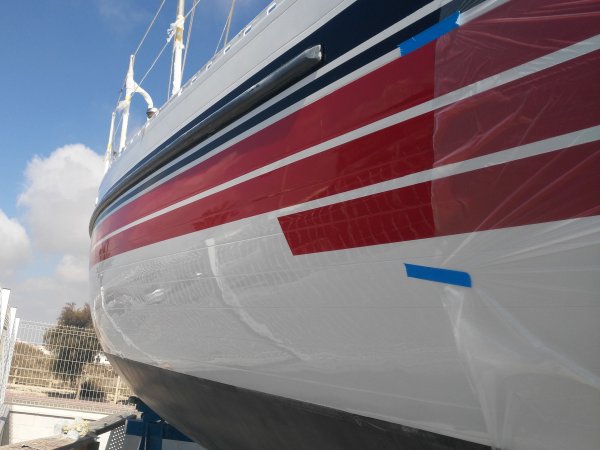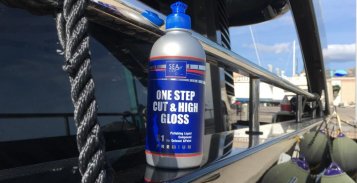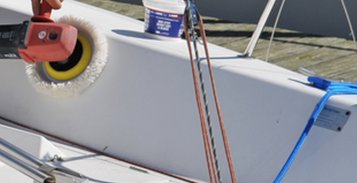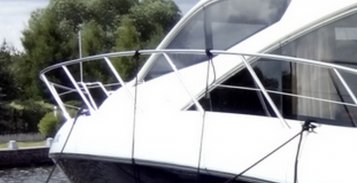
USE:
SURFACE:
EFECT:

LIGHT COLOR GELCOAT – POLISHING INSTRUCTION USE: Renewing the gelcoat surface of light color with mechanical damage and scratches that […]

DARK COLOR GELCOAT – POLISHING INSTRUCTION USE: Removal of discoloration, chalking gelcoat, dull Renewing any surface color which has a small […]

RENEWING THE SURFACE WITHOUT GRINDING – POLISHING INSTRUCTION USE: Renewal of any color with small mechanical damages and small scratches […]

PLEXI AND POLYCARBONATES – POLISHING INSTRUCTION USE: Removal of mechanical damage, scratches and dull from the surface of hatches, windows and […]
Yes, you can mix Sea-Line polyurethane paints. The only difference are the pigments of polyurethane paints that determine the color of the paint. But remember to keep the right proportions of base, hardener and thinner.
Sea-Line HARD and Sea-Line self-polishing antifouling are not intended for aluminum surfaces. They include copper oxide, which in contact with aluminum causes galvanic corrosion. Especially on aluminum, we offer ALU-PLUS self-polishing anti-fouling paint, which, in addition to excellent adhesion to aluminum, is also 30% more effective than traditional anti-fouling paints.

Il patch e compensare le irregolarità derivanti da danni durante la produzione

Barca protezione superficiale contro l’influenza di azioni distruttive di osmosi e la corrosione in ambienti difficili

Protezione contro l’acqua e contro gli effetti negativi delle radiazioni UV

Proteggere la parte inferiore della barca prima-tedesco ricoperta di alghe e conchiglie. La prevenzione dell’azione di acqua.

Rimozione efficace di ritenzione graffi, di aggiornamento e il colore del mantello gel o lacca

Laminazione, incollaggio e tappatura perdite

Per il riempimento di piccole fessure e ubyt gemme in gelcoat

Una gamma di prodotti utili quando si lavora costruttore di barche